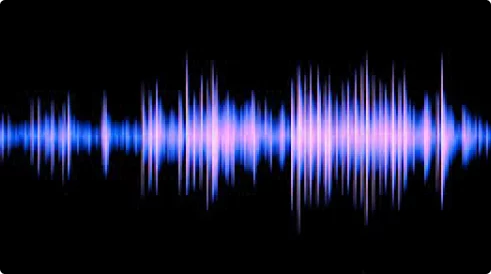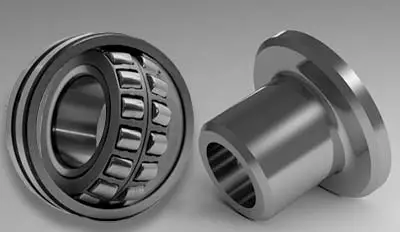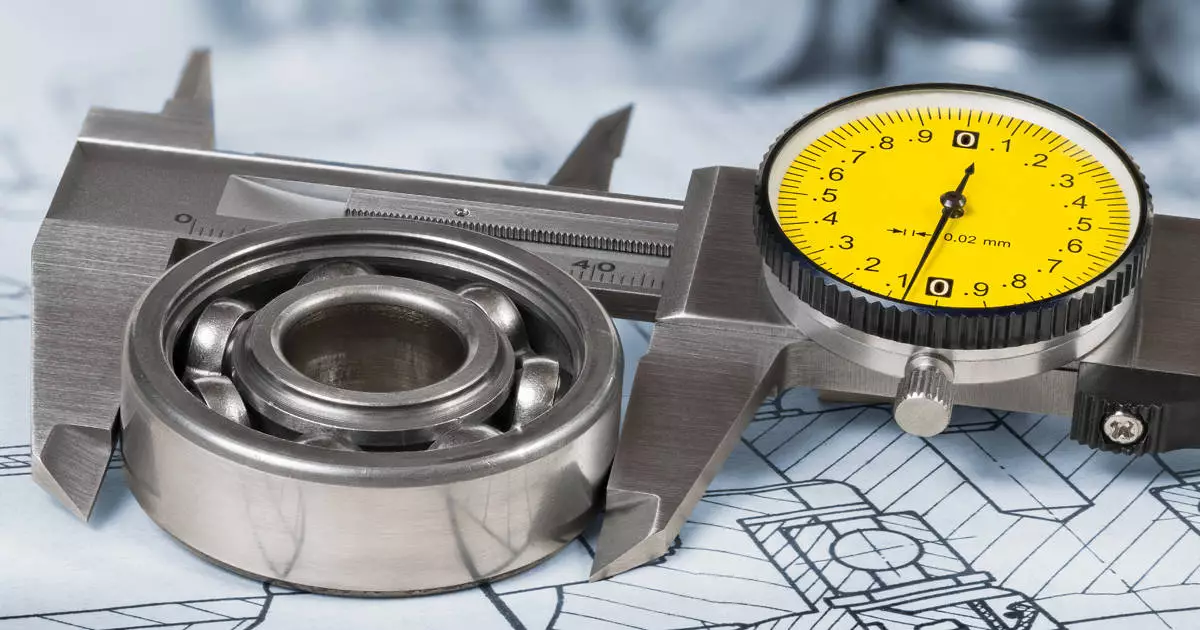
Quick Guide to Bearing Vibration Analysis Methods
Noise from bearing applications may be due to defects in the outer and inner rings , the balls or by contaminants in the bearing.
Limiting noise and vibration are as critical in modern applications as stiffness, load capacity, speeds and service life.
The good news is that bearing quality issues can be tested. Pacific International Bearing Sales offers reliable and quality vibration equipment through SKF Bearing Company.
High-tech analysis and measurement such as frequency analysis (FFT) and further advanced analysis pinpoints faults. Spectral masks help to optimize the bearing performance in the particular customer application.
There is an international standard (ISO) for worldwide calibration on bearing vibration equipment. After some training an operator will be able to rely on this equipment to detect imperfections in bearings.
According to the American Society of Mechanical Engineers (ASME), bearing failures are responsible for approximately 40% of all machinery breakdowns. By employing bearing vibration analysis as a proactive maintenance tool, customers can mitigate risk and optimize operational efficiency.
Understanding Bearing Vibration
Bearing vibration is occurring during machine operation.Vibration can be a result of misalignment, imbalance, mechanical looseness, lubrication issues, and bearing defects. By testing and understanding the reasons behind bearing vibration, engineers can effectively diagnose faults and implement appropriate maintenance strategies.
NSK Bearing offers a downloadable vibration measurement/diagnostic application called Acous Navi for vibration diagnostics. It is available for download from the google play store.
NTN Bearing Company offers something called a Portable Vibroscope. NTN Portable Vibroscope is a device that can measure facility vibrations, and detect abnormalities and damaged positions of bearings. It can be used simply by attaching to the facilities with magnets, screws, etc. Vibration data can be analyzed and managed with Apple iOS smart devices installed with the dedicated application.
The vibration experienced by a bearing can be quantitatively measured using various metrics, such as vibration amplitude, frequency, and phase. Vibration amplitude represents the magnitude of the oscillatory motion and is typically measured in units of displacement (micrometers), velocity (millimeters per second), or acceleration (meters per second squared). The frequency of vibration refers to the number of oscillations per unit of time and is often expressed in hertz (Hz). Additionally, the phase indicates the relative position of the vibration waveform in a specific time domain.
To analyze bearing vibrations, engineers rely on a comprehensive understanding of the vibration signatures associated with different bearing faults. For example, in rolling element bearings, faults such as outer race, inner race, and ball defects generate characteristic frequencies known as fault frequencies. These fault frequencies can be calculated using fundamental formulas, such as the ball pass frequency (BPF) and the outer race fault frequency (ORFF).
The BPF can be determined using the formula:
BPF = (N * d) / 2
- N represents the number of rolling elements and d represents the pitch diameter of the bearing.
Moreover, the severity of bearing vibration can be assessed using vibration severity standards, such as ISO 10816-1, which provides guidelines for evaluating the overall vibration levels of rotating machinery. This standard categorizes machines into different vibration classes based on their rotational speed and provides acceptable vibration limits for each class. By comparing measured vibration levels against these standards, engineers can determine the condition of the bearings and identify potential issues.
Vibration Acceptance Criteria
The Vibration Acceptance Criteria serve as a benchmark to determine the acceptable levels of vibration for bearings in machinery. These criteria are established based on several factors, including the type of bearing, the machinery’s operational role, and industry standards. They are typically derived from guidelines set by organizations like the ISO (International Organization for Standardization) or ANSI (American National Standards Institute). The criteria help in identifying when a bearing’s vibration levels are within a safe range or when they exceed thresholds that could indicate potential problems or impending failures. By adhering to these criteria, engineers can ensure that the bearings operate within safe, predetermined limits, thereby reducing the risk of damage and extending the lifespan of the machinery.
Commonly Used Diagnostic Strategies
- Acoustic Emission Techniques
These techniques detect high-frequency sounds or emissions generated by the bearing. Changes in these emissions can indicate issues such as cracking or spalling within the bearing elements. - Thermographic Analysis
Using infrared cameras to detect heat patterns, this strategy helps in identifying areas of excessive friction or misalignment, which can lead to increased vibration. - Lubricant Analysis
Examining the lubricant for contamination or wear particles can provide insights into the bearing’s condition and potential sources of vibration. - Periodic Inspection and Monitoring
Regular inspections and monitoring of bearing vibration levels over time can help in early detection of issues and trend analysis. - Vibration Analysis
This involves the use of specialized equipment to measure and analyze the frequency, amplitude, and other characteristics of vibration. By interpreting these measurements, engineers can identify specific issues such as misalignment, imbalance, or wear within the bearing.
Tools for Bearing Vibration Analysis
The accurate analysis of bearing vibrations relies on the utilization of specialized tools that can capture and measure vibration data with precision. These tools enable engineers to monitor and diagnose the condition of bearings, facilitating proactive maintenance strategies.
Vibration Sensors
Vibration sensors, such as accelerometers and proximity probes, are crucial instruments for capturing vibrational data. Accelerometers measure vibrations across multiple axes and provide signals that can be analyzed in the time or frequency domain. Proximity probes, on the other hand, are used to detect radial vibrations in rotating machinery, allowing for the measurement of relative shaft displacement.
Data Acquisition Systems
Data acquisition systems are employed to collect and process vibration data from sensors. These systems typically include analog-to-digital converters, signal conditioning modules, and software interfaces. They enable engineers to capture high-fidelity vibration signals and transfer them to analysis software for further processing.
Portable Analyzers
Portable vibration analyzers offer on-the-spot measurement and analysis capabilities. These handheld devices are equipped with built-in accelerometers or can be connected to external sensors. They provide real-time data visualization, spectral analysis, and various diagnostic tools to assess bearing condition in the field.
Diagnostic Software
Advanced diagnostic software packages play an important role in bearing vibration analysis. These software tools employ complex algorithms to analyze vibration data and detect fault signatures. They enable engineers to identify specific fault frequencies, track changes in vibration patterns over time, and generate comprehensive reports for further analysis.
Techniques for Bearing Vibration Analysis
Bearing vibration analysis employs several techniques that provide insights into the dynamic behavior of bearings and aid in accurate fault diagnosis:
- Time-Domain Analysis
Time-domain analysis involves analyzing the raw vibration signal in the time domain. Engineers observe waveform characteristics, such as amplitude, shape, and transient behavior, to gain insights into the nature of the fault. Time-domain analysis is particularly effective in detecting non-periodic or transient faults, such as impacting or rubbing events. It allows for direct visualization of the vibration waveform and the identification of specific features that indicate bearing faults.
- Frequency-Domain Analysis
Frequency-domain analysis focuses on transforming the vibration signal from the time domain to the frequency domain. Techniques like Fast Fourier Transform (FFT) enable engineers to decompose the vibration signal into its constituent frequency components.
By analyzing the amplitude and distribution of these frequencies, engineers can identify specific fault frequencies associated with bearing defects. Frequency-domain analysis provides valuable information about the energy distribution across different frequencies, enabling the detection of fault signatures even in the presence of noise.
- Spectral Analysis
Spectral analysis is a subset of frequency-domain analysis that specifically examines the spectrum of the vibration signal. Power spectral density (PSD) analysis is commonly used, which displays the distribution of power or energy across different frequencies. By visualizing the PSD, engineers can identify characteristic fault frequencies, harmonics, sidebands, and other patterns indicative of specific bearing faults. Spectral analysis provides a comprehensive overview of the frequency content of the vibration signal, facilitating the identification of fault signatures and their relationship to bearing defects.
Conclusion
Real-world case studies across industries such as power generation, oil and gas, and manufacturing underscore the practical applications of bearing vibration analysis. Early fault detection through vibration analysis has been shown to reduce downtime, minimize repair costs, and enhance operational efficiency. By implementing proactive maintenance strategies based on bearing vibration analysis, industries can mitigate the risks of catastrophic failures and optimize the lifespan of critical machinery.
Continued research, training, and the use of reliable scientific sources are essential for staying up-to-date with advancements in bearing vibration analysis.
Ongoing improvements in sensor technology, data analysis algorithms, and diagnostic software will further enhance the capabilities of bearing vibration analysis, enabling engineers to achieve even greater precision in fault detection and interpretation.
Contact us for further information.









 Short Rigid Couplings
Short Rigid Couplings Controlflex Couplings
Controlflex Couplings Jaw Couplings
Jaw Couplings Oldham Couplings
Oldham Couplings Bearing Locknuts – TCN
Bearing Locknuts – TCN Double Wide Shaft Collars
Double Wide Shaft Collars Heavy Duty Shaft Collars
Heavy Duty Shaft Collars International Series Shaft Collars
International Series Shaft Collars Keyed Shaft Collars
Keyed Shaft Collars Mountable Shaft Collars
Mountable Shaft Collars Quick Clamping Shaft Collars
Quick Clamping Shaft Collars Set Screw Shaft Collars
Set Screw Shaft Collars Thin Line Shaft Collars
Thin Line Shaft Collars Threaded Shaft Collars – Pacific International Bearing Products
Threaded Shaft Collars – Pacific International Bearing Products Two-Piece Shaft Collars
Two-Piece Shaft Collars Friction Bearing Universal Joints
Friction Bearing Universal Joints Needle Bearing Universal Joints
Needle Bearing Universal Joints

